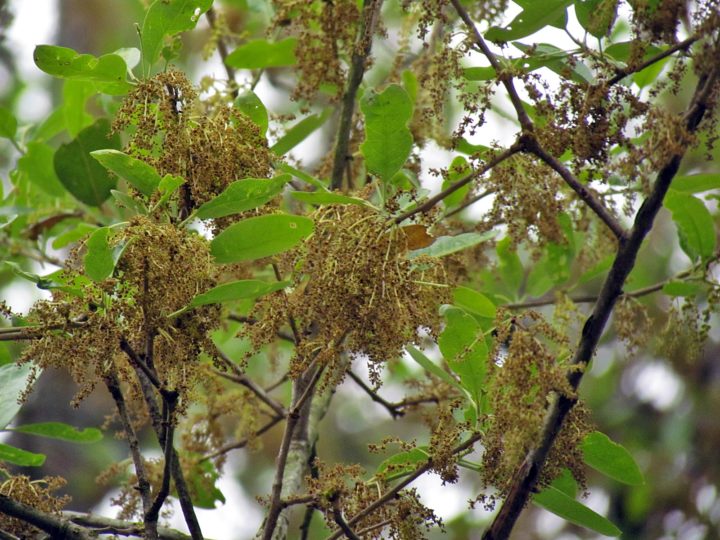It’s your favorite time of year again… live oak pollen and catkins. As an Austin resident, you know that spring is in the air when these two start to make their presence known. Sure, they may make your eyes itch and your nose run, but let’s take a moment to appreciate them for what they are: a sign of new beginnings and the start of warmer weather.
What is a live oak catkin?
Let’s start with the catkins. Catkins are not only a sign of spring and warmer weather, but they are also fascinating structures that play an important role in the reproduction of live oak trees. You may have noticed these little clusters of flowers hanging from the branches of live oak trees. They may look like tiny caterpillars, but they are actually the male flowers of the tree. That’s right, the live oak tree is a gendered organism, and the catkins are its way of spreading pollen to the female flowers.

The fascinating world of pollen and catkins
Each catkin is made up of tiny flowers called florets. These florets produce pollen, which is carried by the wind to the female flowers on other live oak trees. Without this transfer of pollen, there would be no fertilization and, therefore no new live oak trees.
Random fact: Did you know that catkins can also be used for medicinal purposes? Some studies have shown that extracts from certain types of catkins can be used to treat various ailments such as inflammation and pain.
Why is there live oak pollen everywhere right now?
And speaking of pollen, let’s talk about the yellow dust that seems to coat everything in sight during the spring months. Pollen may be disgusting to some, but it’s an essential part of the ecosystem. Pollen is responsible for fertilizing plants, which in turn produce oxygen and food for other organisms. Without pollen, many species of plants would cease to exist, leading to a ripple effect throughout the entire food chain.
In conclusion, live oak pollen and catkins may be a nuisance to some, but they’re also a reminder of the magic of springtime. They’re a sign of new beginnings, a crucial part of the pollination process, and a home to all sorts of critters. So the next time you’re walking under a live oak tree, take a moment to appreciate the beauty of nature’s party.

